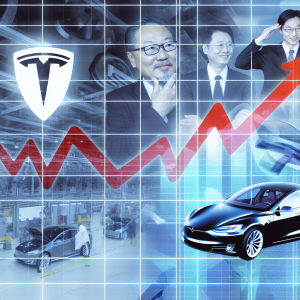Tesla’s China EV Sales: A Turning Point or Just a Pause? What Investors Need to Know Now
Tesla’s electric vehicle (EV) sales in China have finally shown a modest year-over-year increase of 0.8% in June, ending an eight-month streak of declines. While this might seem like a positive sign at first glance, a deeper dive reveals a more complex picture—one that savvy investors and advisors cannot afford to ignore.
The Numbers Behind the Headlines
According to the China Passenger Car Association, Tesla’s Shanghai-made Model 3 and Model Y deliveries—including both domestic sales and exports—jumped 16.1% from May to 71,599 units in June. However, on a quarterly basis, Tesla’s China sales fell 6.8% year-over-year for the April-June period, marking the third consecutive quarterly decline. This trend is especially concerning given that Tesla’s China-made EVs accounted for over half (51.3%) of its global deliveries in Q1 2024.
In stark contrast, BYD, Tesla’s fiercest Chinese competitor, saw its global car sales surge 11% year-over-year in June to 377,628 units. Counterpoint Research forecasts BYD’s global EV sales to grow an eye-popping 45% in 2024, capturing one-fifth of the global market, while Tesla’s sales are expected to drop 10%, comprising just 13% of the market.
What’s Driving Tesla’s China Challenges?
Tesla’s rapid ramp-up of the refreshed Model Y in Shanghai earlier this year—achieved in a record six weeks—showcases its manufacturing prowess. Yet, the company faces mounting headwinds:
-
Fierce Competition: New lower-cost models from Chinese automakers like BYD and Xiaomi are aggressively capturing market share. Xiaomi’s YU7 SUV, priced about 4% below Tesla’s Model Y, has seen exceptionally strong initial orders. Xiaomi’s SU7 sedan has even outsold Tesla’s Model 3 on a monthly basis since December 2023.
-
Political and Reputation Risks: Tesla’s CEO Elon Musk has faced political backlash in China, which may be dampening consumer enthusiasm.
-
Pricing Strategy: Contrary to analyst speculation that Tesla might cut prices to compete, Tesla recently raised the price of the Model 3 long-range variant by 3.6% in China, while upgrading its range by 40 km to 753 km. This signals Tesla’s confidence in its product but may alienate price-sensitive Chinese buyers.
What This Means for Investors and Advisors
Tesla’s China market challenges highlight a broader trend: localization and price competitiveness are becoming critical in the global EV race. For investors, this means:
-
Diversify EV Exposure: Relying solely on Tesla for EV growth may be risky. Consider increasing exposure to Chinese EV makers like BYD and emerging players such as Xiaomi, who are leveraging local market knowledge and aggressive pricing.
-
Monitor Pricing Strategies: Tesla’s decision to raise prices rather than cut them could impact its market share negatively if competitors continue to undercut prices. Investors should watch for future pricing moves closely as a key indicator of Tesla’s competitive stance.
-
Assess Political Risk: Tesla’s political challenges in China underscore the importance of geopolitical risk assessment in global investments. Diversifying geographic exposure within the EV sector can mitigate such risks.
-
Look Beyond Volume: Tesla’s strong manufacturing capabilities are impressive, but sales volume and market share trends are more telling of long-term sustainability. Investors should track quarterly sales data closely, especially in key markets like China and Europe.
What’s Next?
The EV market in China is rapidly evolving into a battleground where innovation, pricing, and political savvy will determine winners and losers. For 2024 and beyond, expect:
- Increased Competition: More Chinese automakers will enter the fray with competitive pricing and innovative features.
- Tesla’s Strategic Moves: Will Tesla eventually cut prices in China, or double down on premium positioning? This decision will be pivotal.
- Market Share Shifts: BYD’s forecasted 45% sales growth could reshape the global EV landscape, potentially dethroning Tesla as the dominant player.
A Unique Insight: The Xiaomi Factor
Xiaomi’s rapid ascent from smartphone maker to EV contender is a trend investors should watch closely. Their ability to leverage brand loyalty and competitive pricing in China is disrupting the market. For example, Xiaomi’s YU7 SUV pricing undercuts Tesla’s Model Y by nearly 4%, yet it boasts strong demand, signaling a shift in consumer preference toward value-driven EVs.
Final Takeaway
Tesla’s slight sales uptick in June is not a signal to relax. Instead, it’s a wake-up call for investors to reassess the evolving competitive dynamics in China’s EV market. The next 12 months will be critical as Tesla navigates price pressures, political risks, and fierce competition. Investors and advisors should stay nimble, diversify EV holdings, and keep a close eye on pricing and sales trends to capitalize on the true winners in this fast-changing sector.
Sources: China Passenger Car Association, Counterpoint Research, Reuters, and Extreme Investor Network analysis.
Source: Tesla’s June China-made EV sales see first rise in 9 months, but quarterly fall continues

